Experience Fushimi Inari Shrine in Authentic Kimono
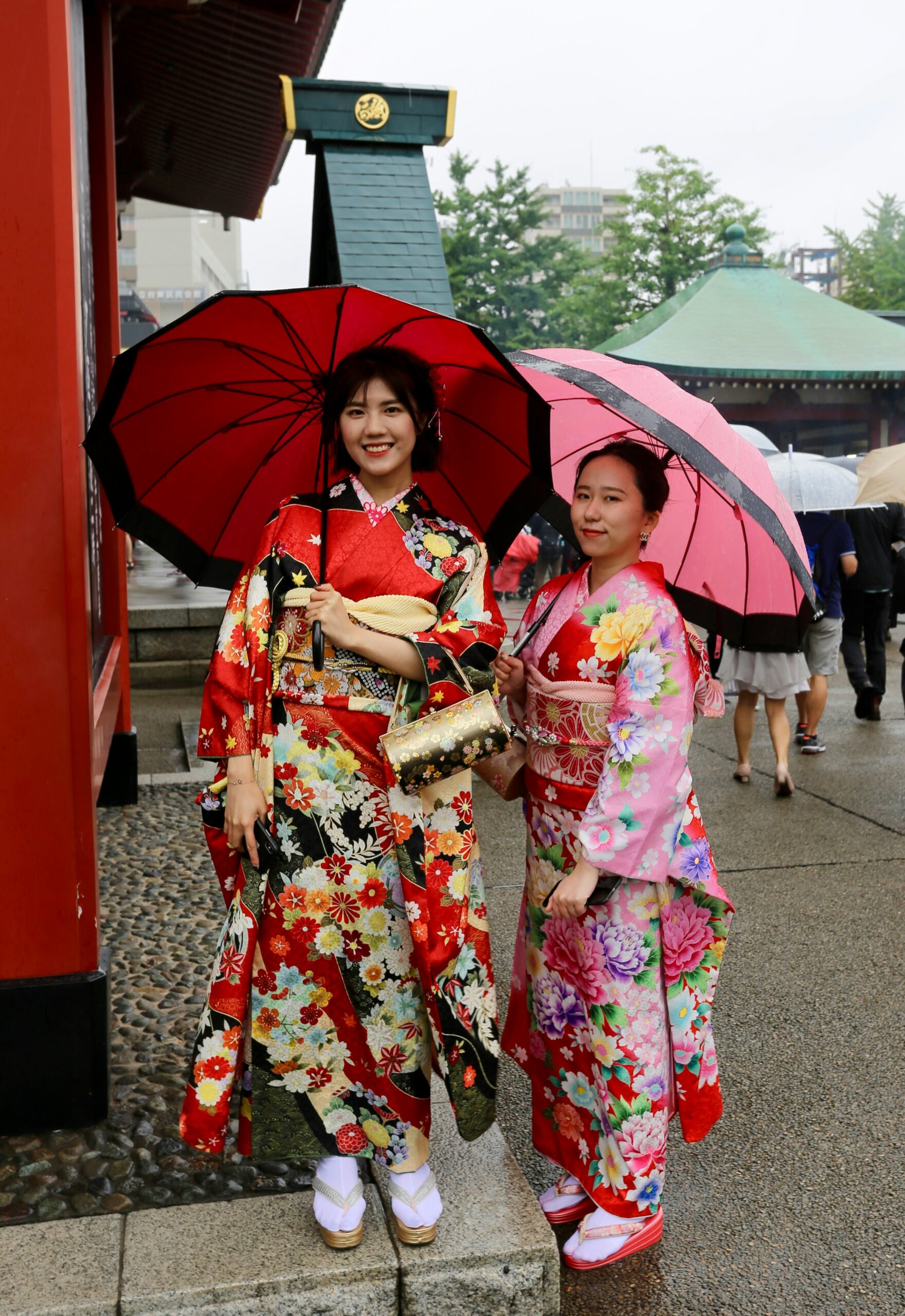
- Introduction: Kyoto’s Living Canvas of Tradition
- 🎎 Why Fushimi Inari Shrine Is So Iconic
- 👘 The Art of Wearing a Kimono at Fushimi Inari
- 📷 Capturing the Moment: Why Professional Photography Matters
- 🦊 The Spiritual Symbolism of the Fox (Kitsune)
- 🌅 Best Times to Visit Fushimi Inari in a Kimono
- 🏮 How to Prepare for Your Kimono Walk
- 🌸 Beyond Fushimi Inari: Kyoto’s Other Kimono-Worthy Spots
- 📚 Cultural Etiquette: Respecting the Shrine and Tradition
- 🧭 How to Get to Fushimi Inari Shrine
- 🧧 Why This Experience Is Perfect for Couples and Travelers
- 🔗 External Resources for Planning Your Visit
- 🏆 Conclusion: A Walk Through Time and Spirit
Introduction: Kyoto’s Living Canvas of Tradition
Few places in the world blend ancient spirituality and timeless beauty as perfectly as Kyoto. And nowhere is that harmony more visible than at Fushimi Inari Taisha, the sacred shrine famous for its thousands of red torii gates stretching endlessly through the forested hills.
Now imagine experiencing that view while wearing a traditional kimono—the soft rustle of silk, the sound of your sandals on the stone path, and the gentle wind carrying the scent of incense. It’s not just sightseeing; it’s stepping into a living painting of Japanese tradition.
At AllPhoto Kyoto, we bring this moment to life—capturing the essence of your Kyoto journey through authentic kimono photography experiences.
🎎 Why Fushimi Inari Shrine Is So Iconic
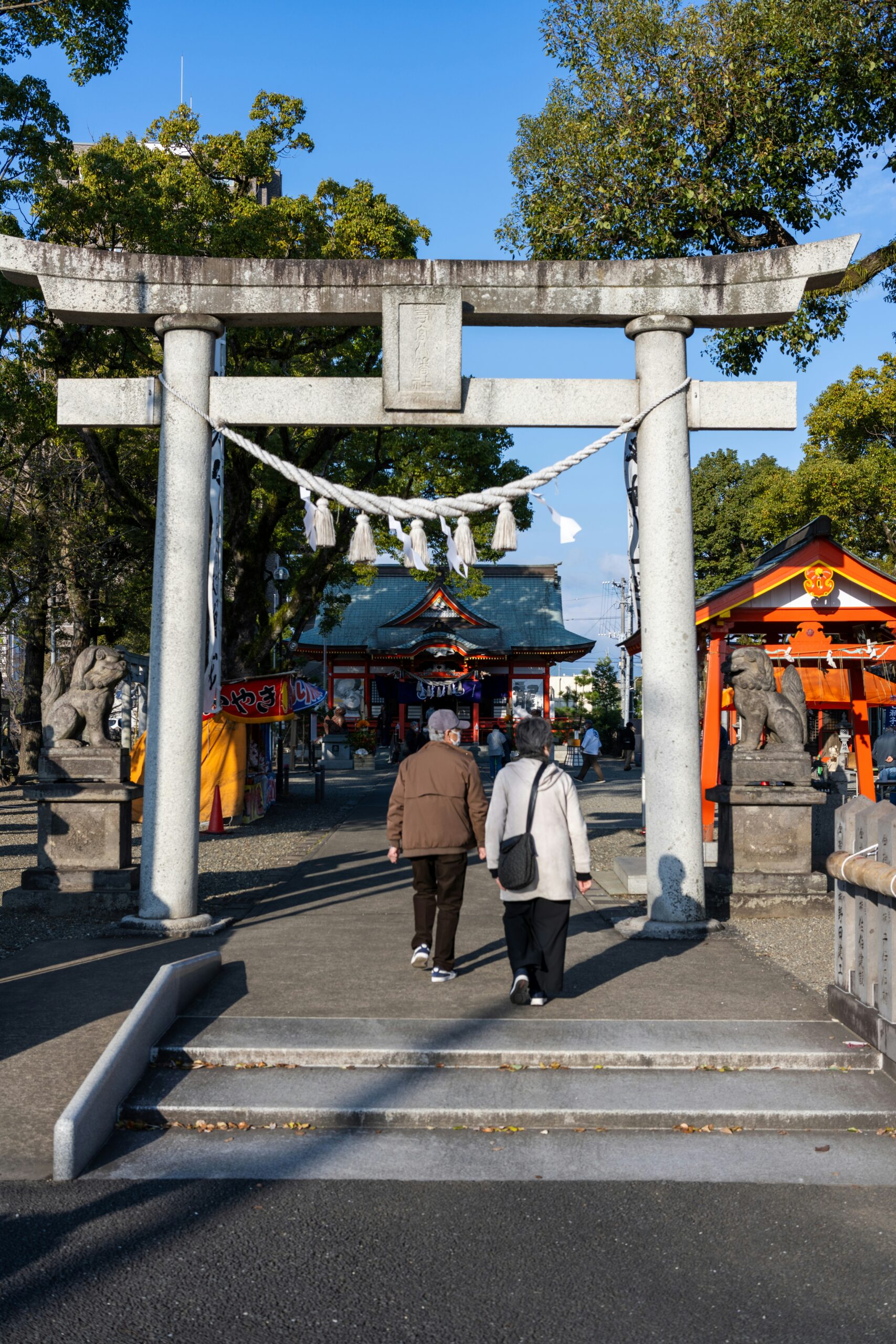
The mesmerizing tunnel of 10,000 torii gates at Fushimi Inari Shrine
Located at the base of Mount Inari, this shrine is dedicated to Inari Ōkami, the Shinto deity of rice, prosperity, and foxes. With over 10,000 torii gates, each donated by individuals or companies seeking good fortune, the shrine forms a tunnel of vermilion that glows like fire during sunrise and sunset.
Walking through these gates, visitors feel a blend of awe and tranquility—a sensation deeply tied to Japan’s spiritual heritage.
Wearing a kimono here transforms your visit from a tourist stop into an immersive cultural journey. The colors of your attire merge with the orange-red gates, creating a striking contrast that feels both powerful and serene.
👘 The Art of Wearing a Kimono at Fushimi Inari
A kimono isn’t just clothing—it’s a statement of respect for Japanese culture and beauty. Kyoto, once Japan’s imperial capital, remains the heart of traditional kimono artistry.
When you walk through the torii gates in a kimono, every photograph becomes a story. The way the fabric catches the light, the flow of your sleeves, and the silhouette framed by the gates evoke the poetry of centuries past.
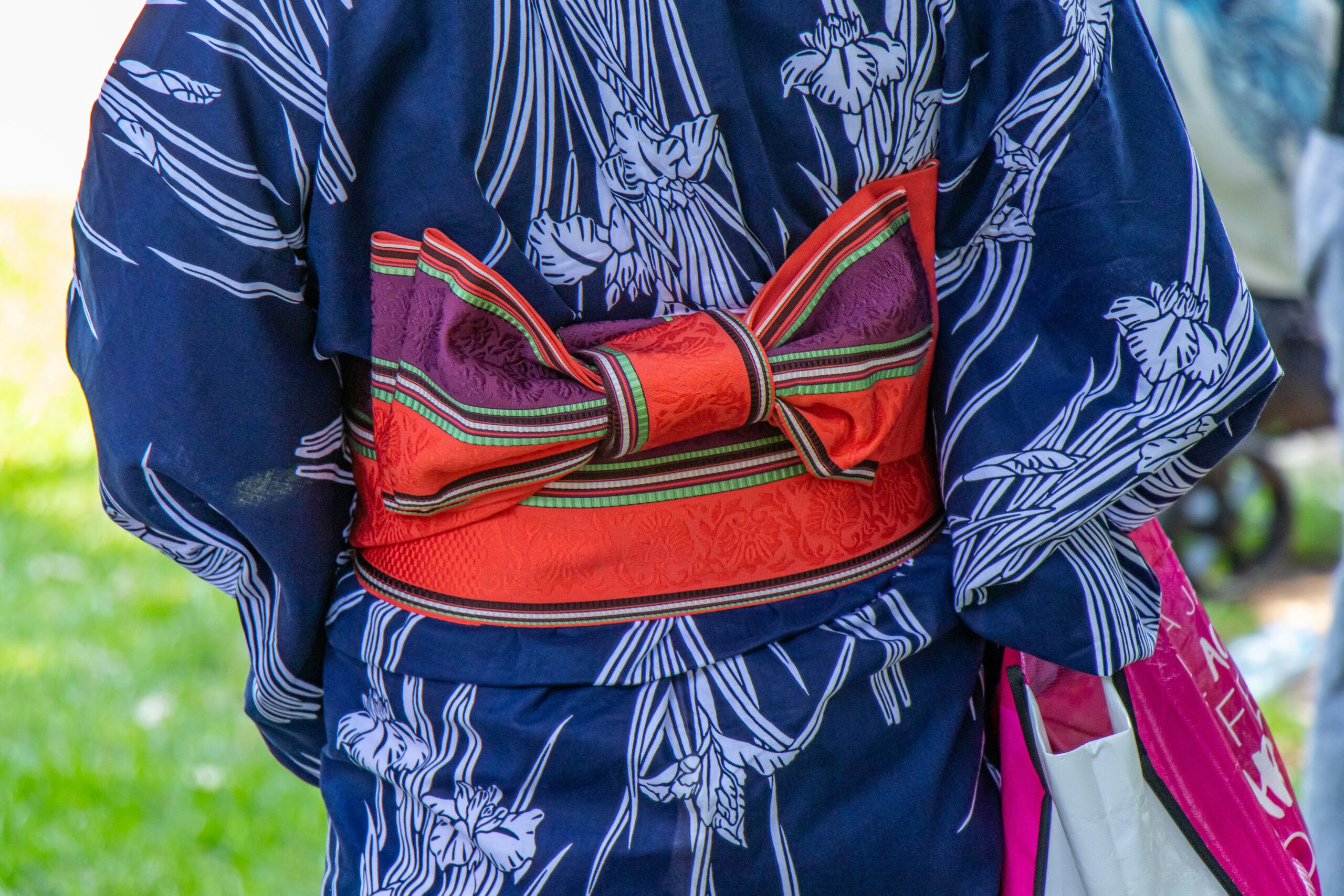
Exquisite detail of traditional kimono obi craftsmanship
At AllPhoto Kyoto, we offer:
- Authentic silk kimonos for men and women
- Professional dressing assistance (kitsuke) by experienced staff
- Photographers specializing in natural light to capture the shrine’s unique glow
- Flexible sessions from sunrise to dusk
📷 Capturing the Moment: Why Professional Photography Matters
Many visitors try to take photos themselves, but Fushimi Inari’s light and depth require an expert eye. The bright torii gates can overpower smartphone cameras, and crowds often make it difficult to get a clean shot.
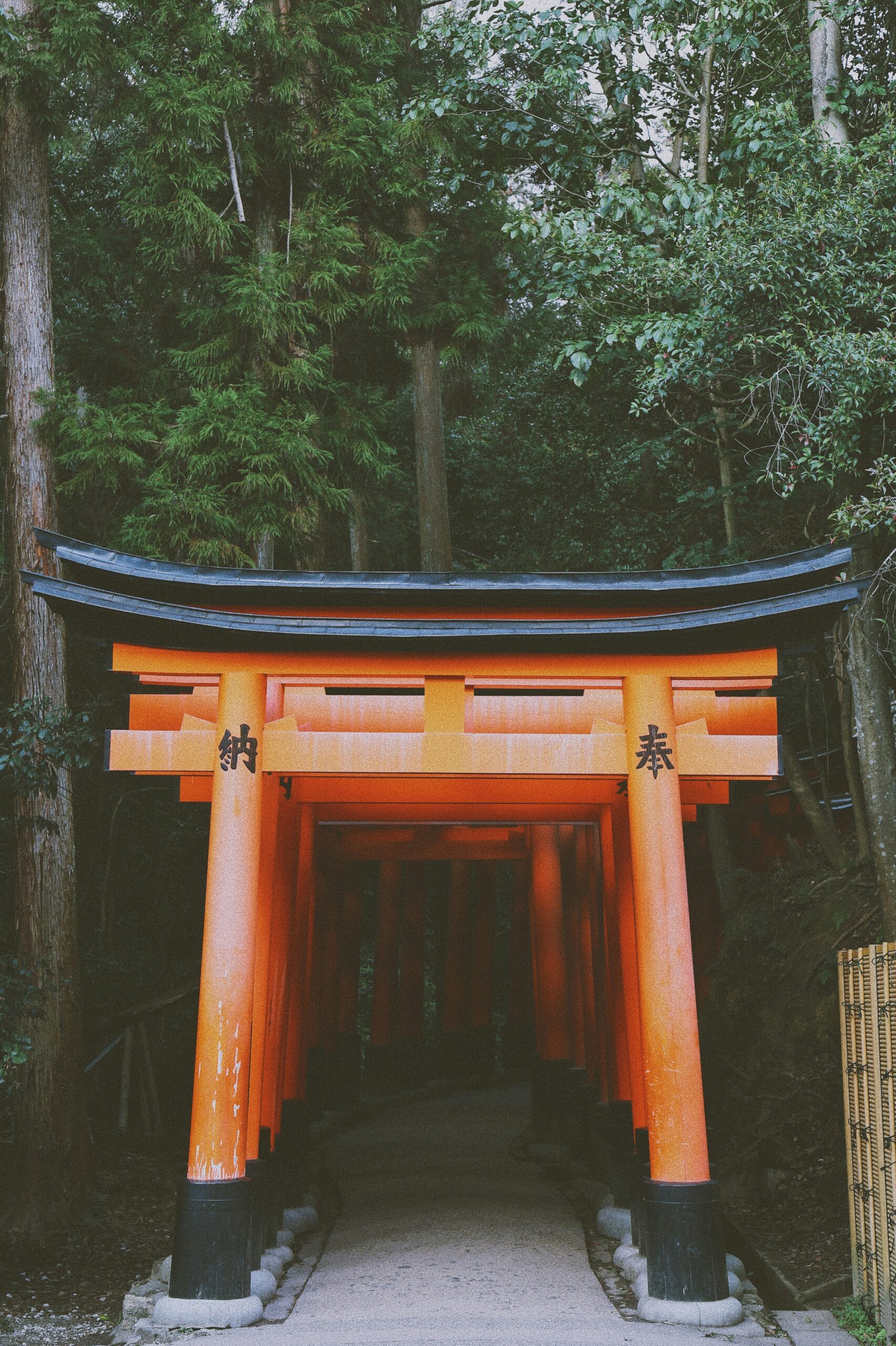
A romantic moment captured – couple in matching kimonos at Fushimi Inari
A professional photographer knows:
- The best angles for balance between gates and subject
- The ideal times of day to avoid harsh shadows
- How to use depth of field to create cinematic portraits
- Ways to highlight the kimono’s colors and textures
At AllPhoto Kyoto, our mission is to make your images timeless—just like the shrine itself.
🦊 The Spiritual Symbolism of the Fox (Kitsune)
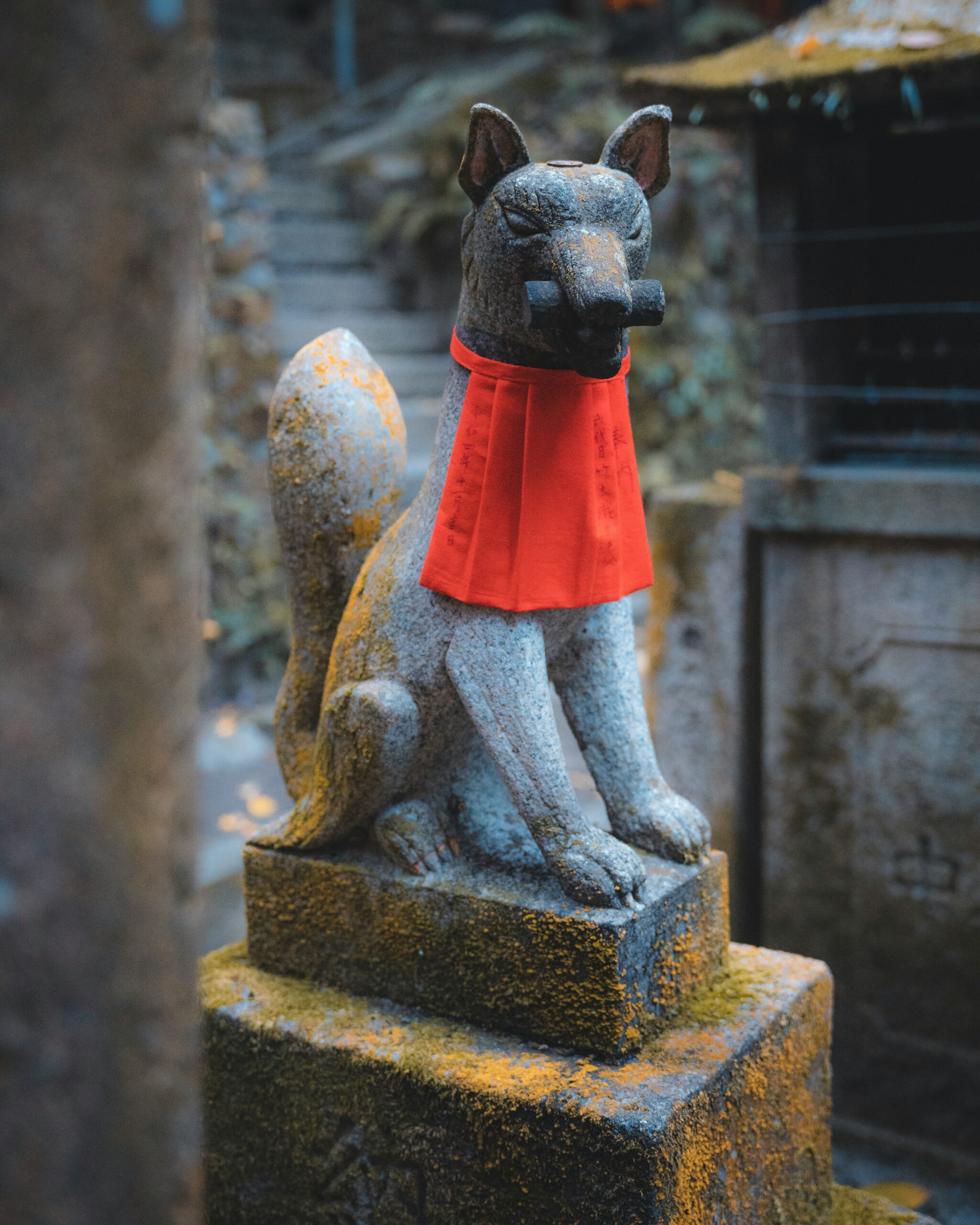
Sacred kitsune fox statue with red bib – messengers of the Inari deity
All around Fushimi Inari, you’ll notice fox statues holding keys in their mouths. These foxes are believed to be messengers of the gods, protectors of rice fields, and guardians of prosperity.
Their silver-white presence contrasts beautifully with the red torii, and in kimono photography, they add a mystical layer to your images. Many visitors choose to pose beside these statues, combining beauty and symbolism in one frame.
🌅 Best Times to Visit Fushimi Inari in a Kimono
Timing is everything for both photography and comfort.
| Time of Day | Atmosphere | Lighting | Crowd Level |
|---|---|---|---|
| Sunrise (5–7 AM) | Magical, quiet | Soft golden glow | Very low |
| Morning (8–10 AM) | Peaceful | Balanced natural light | Moderate |
| Afternoon (1–4 PM) | Vibrant colors | Strong light, ideal for contrast | High |
| Sunset (5–6 PM) | Romantic, warm | Golden tones through torii | Low to moderate |
We recommend early morning sessions for the most peaceful experience and the most ethereal light.
🏮 How to Prepare for Your Kimono Walk

Professional kimono dressing preparation at our studio
🧘♀️ 1. Dress Comfortably Beneath
Wear light inner clothing—breathable fabrics help since Kyoto summers can be warm.
👡 2. Choose the Right Footwear
Traditional zōri sandals complete the outfit but may feel unusual at first. Don’t worry—our staff will teach you how to walk gracefully.
💄 3. Consider a Hair and Makeup Package
Traditional hairstyles, such as the wareshinobu or yuiwata, beautifully frame your face and complement your kimono.
🪷 4. Bring Minimal Belongings
Keep your hands free for photos; our studio can store your personal items safely.
🌸 Beyond Fushimi Inari: Kyoto’s Other Kimono-Worthy Spots
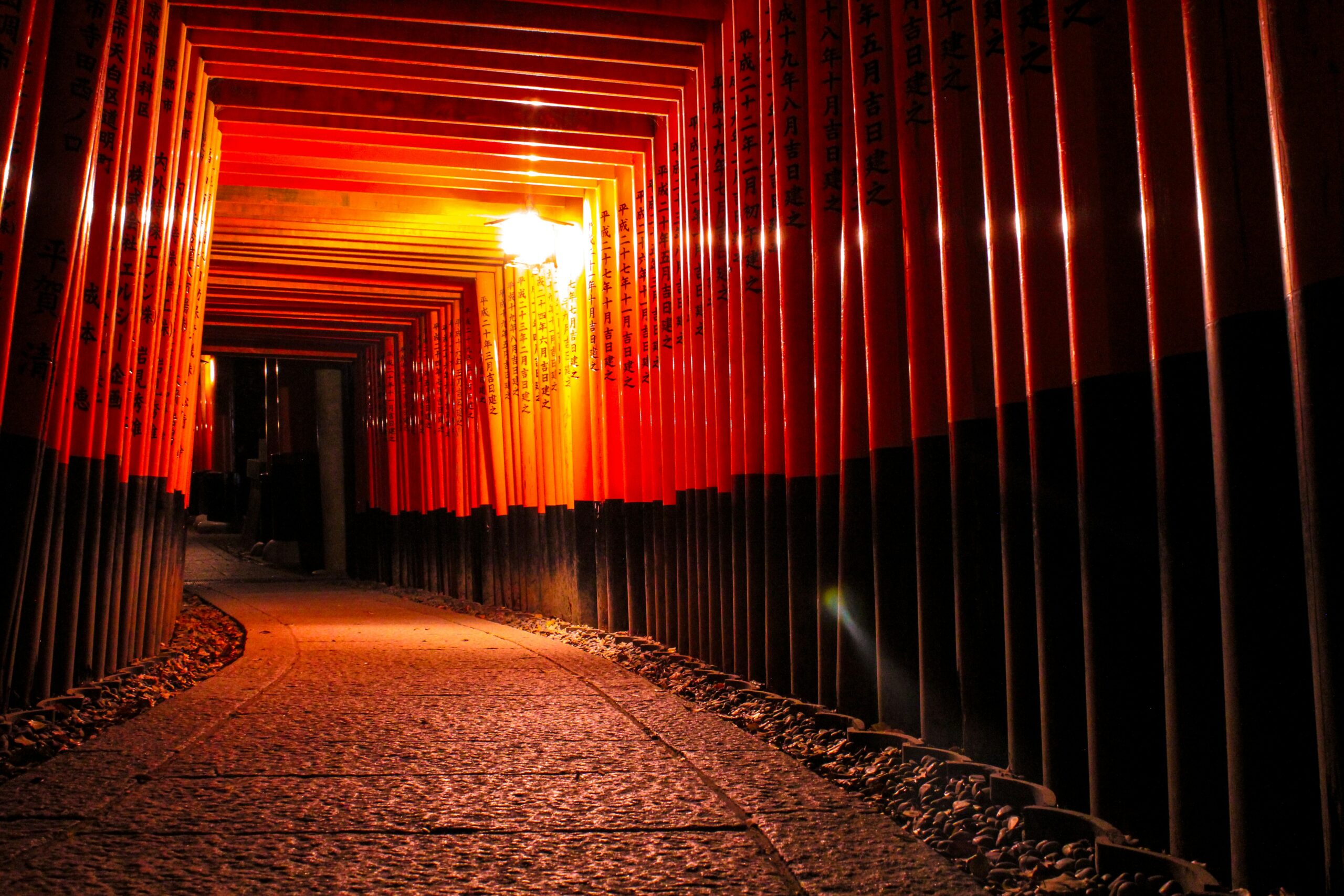
Stunning aerial perspective of Fushimi Inari’s mountain trail
While Fushimi Inari is iconic, Kyoto is filled with stunning photo locations. Many visitors book a half-day session covering multiple spots:
- Gion District – Historic streets lined with teahouses and geisha culture
- Yasaka Pagoda – One of the city’s most photogenic symbols
- Arashiyama Bamboo Grove – Ethereal forest walks in soft light
- Kiyomizu-dera Temple – Panoramic views and cherry blossoms
- Ninenzaka and Sannenzaka – Old Kyoto charm at its finest
AllPhoto Kyoto offers packages that include transportation and outfit changes, making your photoshoot seamless and unforgettable.
📚 Cultural Etiquette: Respecting the Shrine and Tradition
Wearing a kimono comes with a sense of respect and awareness. Here are simple tips to honor the space:
- Speak softly within shrine grounds.
- Avoid blocking worshippers on the main path.
- Do not lean or sit on torii gates.
- Bow lightly before entering sacred areas.
- Take photos mindfully, respecting others’ privacy.
This mindful behavior not only deepens your experience but ensures your photos capture the authentic spirit of Kyoto.
🧭 How to Get to Fushimi Inari Shrine
🚉 By Train: Take the JR Nara Line from Kyoto Station to Inari Station (5 minutes). The shrine entrance is right outside the station.
🚶♀️ By Foot: It’s a pleasant 10-minute walk from Fushimi Inari Station on the Keihan Line.
🕐 Opening Hours: Open 24 hours, with no admission fee.
💡 Tip: Visit just after sunrise or before sunset for ideal lighting.
🧧 Why This Experience Is Perfect for Couples and Travelers
Many couples choose to wear matching kimonos for symbolic photos under the torii gates—a representation of unity and shared destiny. Solo travelers, too, often find that walking in kimono awakens a sense of calm and presence rarely felt in modern life.
With our photographers, you’re not just taking pictures—you’re capturing emotions that transcend language and culture.
🔗 External Resources for Planning Your Visit
- Japan National Tourism Organization: Kyoto Travel Guide
- Fushimi Inari Taisha Official Site
- Kyoto Kimono Culture Overview
🏆 Conclusion: A Walk Through Time and Spirit
To walk through Fushimi Inari Shrine in a kimono is to step between worlds—the physical and the spiritual, the modern and the ancient. Every torii gate you pass marks a prayer, every step an offering, and every photograph a memory etched forever.
If you’re looking to capture this once-in-a-lifetime experience, let AllPhoto Kyoto be your creative companion. We don’t just take pictures—we preserve your connection with Kyoto’s living heritage.


コメント